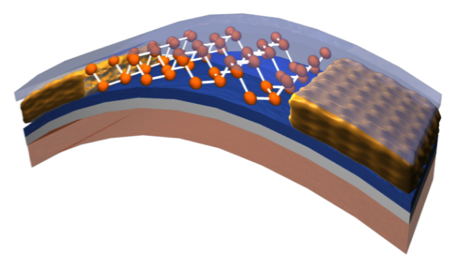Structure of nano-transistors (upper gate) (PhD in nano-microelectronics
Researcher and author: Dr. ( Afshin Rashid)
Note: In the structure of high gate nanotransistors , carbon nanotubes are completely inserted into the gate insulation for greater gain .
Unlike rear gate gate carbon nanotube effect transistors, many of these transistors can be built on a single wafer, because the gates of each are separate. Also, due to the low dielectric thickness of the gate in the nanotransistor, a larger electric field can be created with a low voltage on the carbon nanotube. Despite the more complex manufacturing process than rear gate gate carbon nanotube effect transistors, the above advantages make this type preferred. Changes in the channel width of the nanotransistor around the gate field effect can cause undesirable changes and loss of mobility. A gate nanotransistor - the gateway around the FET - can bypass the problem. And Electrostatically, the gate gate is a versatile nanotransistor in which a gate is placed on all four sides of the channel.
Placing the gate around and on all the nanotubes, which improves the performance. Separating the source and drain area, si is added under the carbon nanotube. This removal continues until the bed insulation is reached. Then, using materials that have a high dielectric coefficient, insulation is created between the gate and the source and drain, and also a metal is placed on this insulation for better connection of the gate metal to the carbon nanotube. Structure The structure of nanotransistors (upper gate) using (Carbon Nanotube) represents a new class of semiconductor materials consisting of a single plate of carbon atoms assembled to form a tubular structure. Nanotransistors (upper gate) Which uses the CNT semiconductor as a channel material between two metal electrodes, which acts as the source and discharge contacts.
Conclusion :
In the structure of high gate nanotransistors , carbon nanotubes are completely inserted into the gate insulation for greater gain . The process of making nanotubes has caused variability in the diameter of the tubes, which is usually between 1 and 2 nanometers. By changing the diameter of the nanotube, the band gap changes, and as a result, the transistor threshold voltage and the transistor current change.





